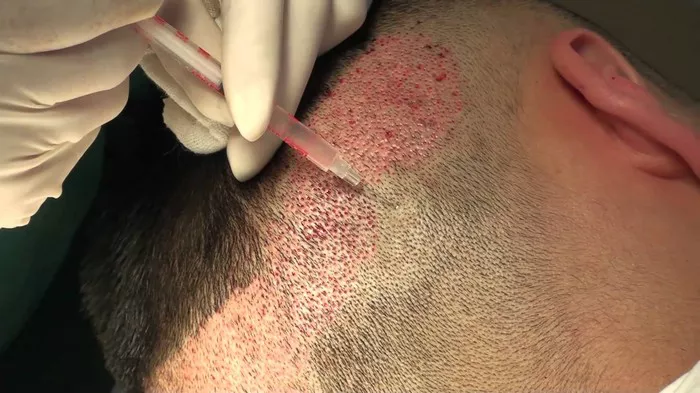Hair transplantation is a widely sought-after cosmetic procedure for those experiencing hair loss. It offers a permanent solution to restore natural-looking hair growth. However, the process involves several stages, including the formation and subsequent shedding of scabs. Patients often wonder about the timeline for this crucial phase of recovery. In this comprehensive guide, we delve into the intricacies of hair transplant scab formation, their duration, and tips for optimal healing.
The Formation of Scabs:
After undergoing a hair transplant procedure, the scalp undergoes a series of healing processes. One of the initial responses is the formation of scabs over the newly implanted hair follicles. These scabs consist of dried blood, serum, and tissue debris. They serve as a protective barrier, shielding the grafts as they integrate into the scalp.
The formation of scabs typically begins within the first 24 to 72 hours following the procedure. During this time, patients may experience mild discomfort or itching in the treated areas. This is a natural part of the healing process and indicates that the body is responding to the trauma inflicted during the surgery.
Duration of Scabbing:
The duration of scabbing varies from patient to patient and depends on several factors, including the individual’s healing ability, the extent of the procedure, and post-operative care. On average, hair transplant scabs begin to fall off within 7 to 14 days after the surgery. However, it’s essential to note that complete healing may take several weeks.
During the first week post-surgery, the scabs may appear dark or crusty and can be quite prominent. Patients are advised not to pick or scratch at them to avoid dislodging the grafts and potentially causing scarring. As the healing progresses, the scabs gradually loosen and fall off naturally.
Factors Affecting Scab Duration:
Several factors can influence how long it takes for hair transplant scabs to fall off:
1. Size of the Grafts: Larger grafts may require more time to heal, leading to prolonged scabbing.
2. Type of Transplant Technique: Different hair transplant methods, such as follicular unit transplantation (FUT) or follicular unit extraction (FUE), may have varying impacts on scab formation and duration.
3. Individual Healing Response: Each patient’s body responds differently to the surgical trauma, affecting the speed of scab formation and shedding.
4. Post-Operative Care: Proper care and adherence to post-operative instructions play a crucial role in facilitating the healing process and minimizing scab duration.
Tips for Faster Healing and Scab Removal:
While the natural healing process takes time, there are several steps patients can take to promote faster recovery and aid in the removal of scabs:
1. Follow Post-Operative Instructions: Strictly adhere to the instructions provided by your surgeon, including medications, washing protocols, and activity restrictions.
2. Keep the Scalp Clean: Gently wash the scalp with a mild shampoo as instructed by your surgeon to prevent the buildup of debris and promote scab loosening.
3. Avoid Scratching or Picking: Refrain from scratching or picking at the scabs, as this can disrupt the healing process and increase the risk of complications.
4. Stay Hydrated: Drink plenty of water to keep the body hydrated, which supports overall healing and skin regeneration.
5. Protect the Scalp: Avoid exposing the scalp to direct sunlight or harsh environmental conditions that may irritate the healing skin.
6. Use Moisturizers: Apply recommended moisturizers or ointments to the scalp to keep the skin hydrated and promote scab softening.
When to Consult Your Surgeon:
While hair transplant scabbing is a normal part of the healing process, certain symptoms may warrant medical attention. If you experience any of the following issues, contact your surgeon promptly:
Excessive Bleeding: Persistent bleeding from the donor or recipient sites beyond the initial post-operative period.
Signs of Infection: Symptoms such as increased redness, swelling, warmth, or drainage from the surgical areas.
Delayed Healing: Failure of the scabs to shed within the expected timeframe or signs of poor wound healing.
Severe Pain or Discomfort: Intense or worsening pain that is not alleviated by prescribed medications.
Conclusion:
Hair transplant scabbing is a temporary but essential phase of the post-operative recovery process. Understanding the timeline for scab formation and shedding can alleviate concerns and help patients navigate this period with confidence. By following proper post-operative care instructions and adopting healthy habits, individuals can promote faster healing and achieve optimal results from their hair transplant procedure. As always, consult your surgeon if you have any concerns or experience unusual symptoms during the recovery process.


